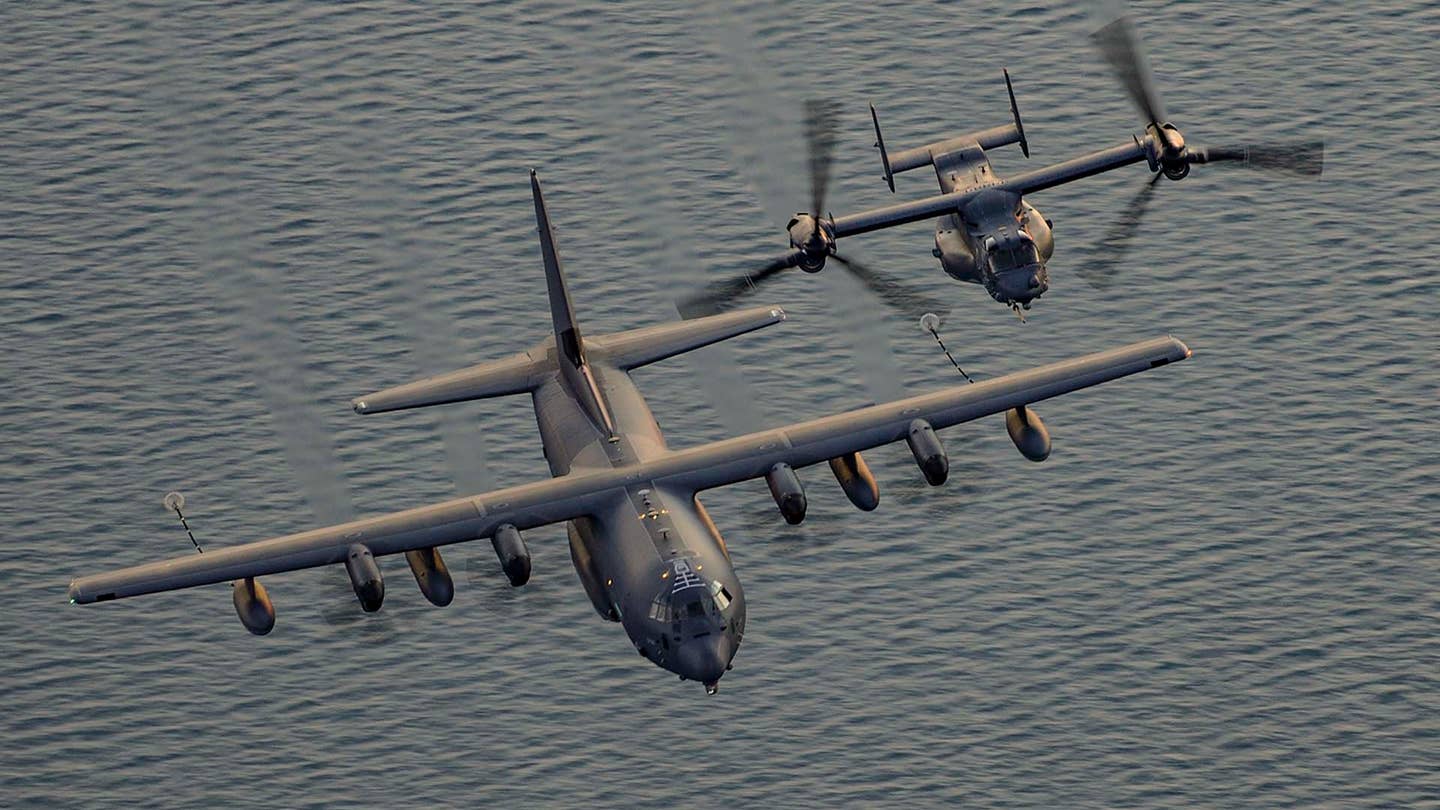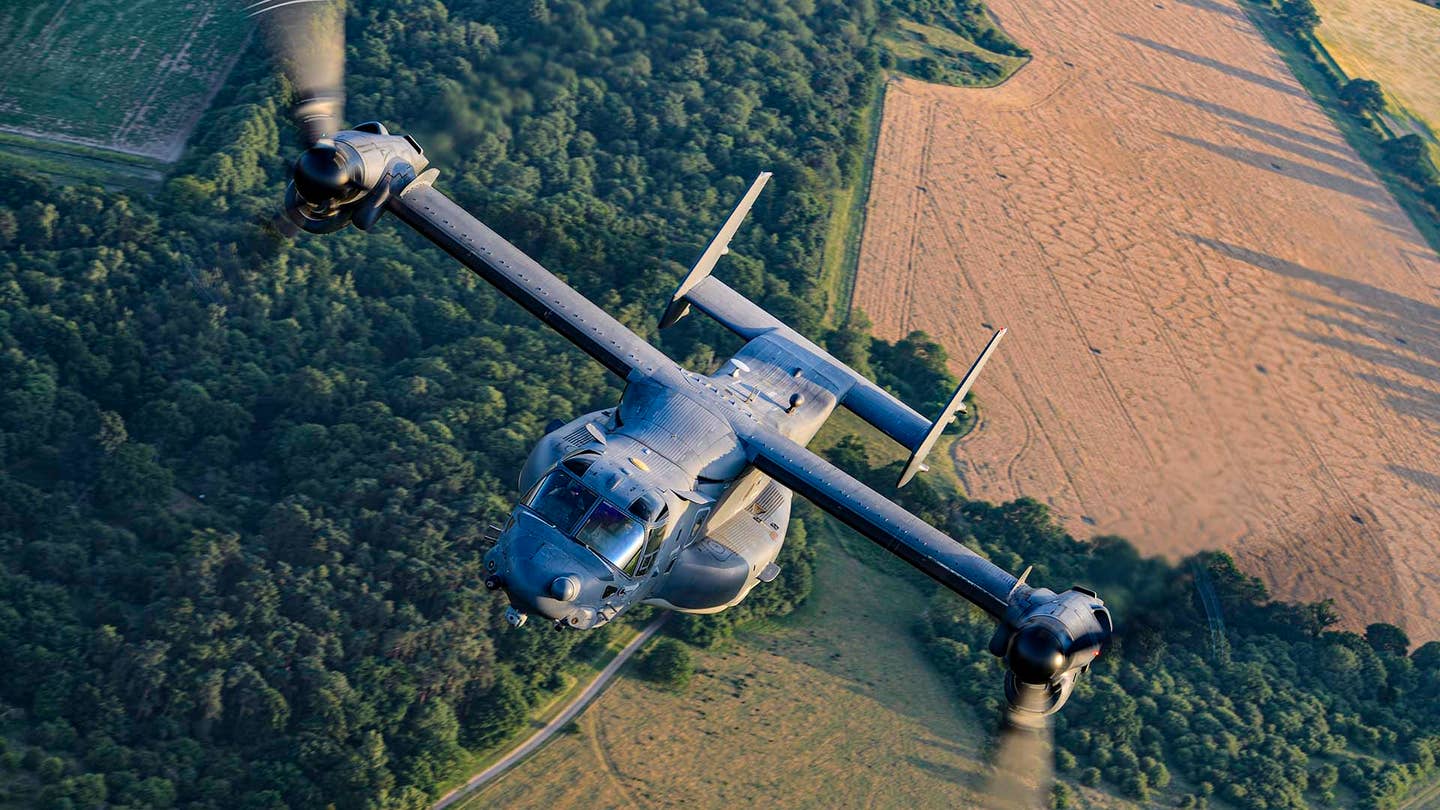America’s Elite Flying Unit That Made The Recent Long-Range Hostage Rescue In Africa Possible
The Nigerian rescue mission shows how CV-22B Ospreys and MC-130J Commando IIs based in the UK are truly America’s “9-1-1” force.
- The special operations Ospreys and their MC-130J Commando II companion aircraft used in October’s mission came from the 352nd Special Operations Wing (SOW) and the KC-135R tankers came from the 100th Air Refueling Squadron, all of which are based at RAF Mildenhall, in the UK.
- This unique and elite team is tailored to swiftly execute exactly this kind of high-stakes mission as America’s regional “9-1-1” emergency response force for Europe and Northern Africa.
- Four of these forward-deployed Ospreys were subsequently launched for the clandestine long-range, round-trip to Nigeria, where Walton was being held.
- Four KC-135Rs joined the assault, and these were used to refuel the MC-130Js, which in turn topped-up the fuel tanks of the Ospreys in order to facilitate such a long-range rescue, that spanned at least 1,700 miles each way.
- The mission also included an AC-130J gunship, which was likely to have provided top cover during the actual extraction phase, along with a U.S. Navy P-8A Poseidon, which likely employed its sensors and communications to provide command and control and overwatch support.
- Operation Eagle Claw involved eight RH-53D Sea Stallion helicopters and six C-130s, three MC-130E Combat Talon special operations transports and three EC-130E Airborne Battlefield Command and Control Center (ABCCC) aircraft, which were used for an ambitious rescue attempt that ended in disaster when one of the RH-53s crashed into a parked EC-130E during a remote refueling operation deep in the Iranian desert, killing five 8th Special Operations Squadron Airmen and three Marines.
Mildenhall’s modern AFSOC team
Today, the 352nd SOW is AFSOCs emergency service for Special Operations Command Europe (SOCEUR), and Special Operations Command Africa (SOCAFRICA). It supports all manner of covert and clandestine missions and short-notice calls to action during any number of crises, as evidenced by this rescue. . .
“Pre 9-11, we were executing rapid crisis response, conducting short-duration contingency operations, and most frequently, supporting the larger joint force with specialized capabilities,” commented AFSOC commander Lieutenant General Jim Slife, adding that AFSOC post 9-11 transitioned from short-duration crisis and contingency response to sustained combat operations. “We are at another inflection point and the strategic landscape has shifted fundamentally, yet again underneath us,” Slife noted, underscoring an overall shift towards preparing for high-end, near-peer threats.
Continue reading > The War Zone





No comments:
Post a Comment